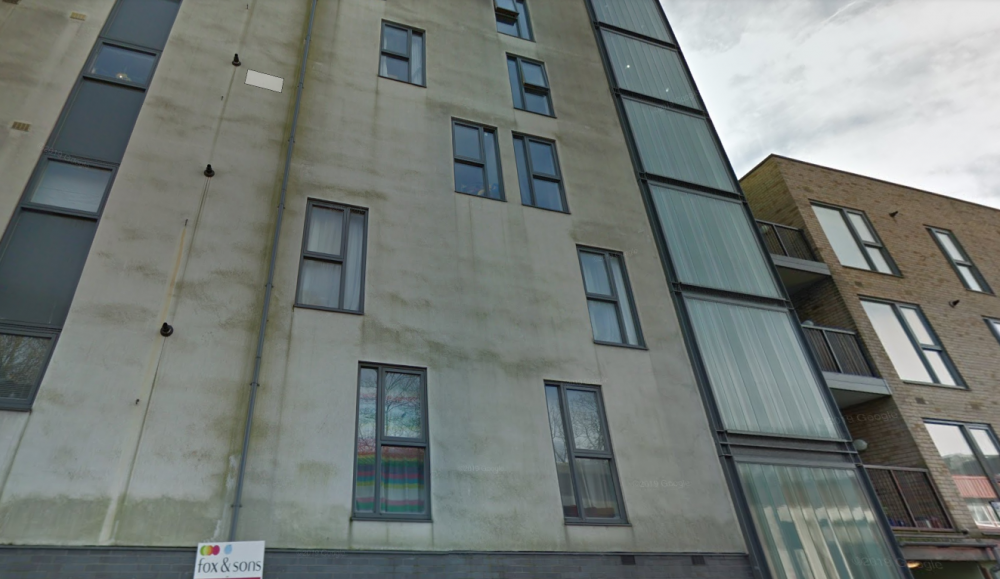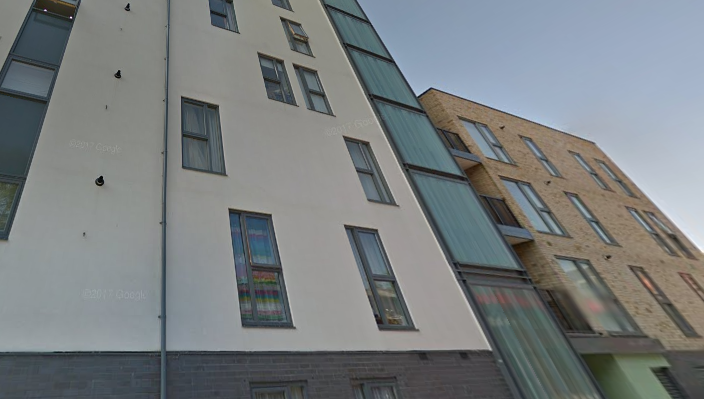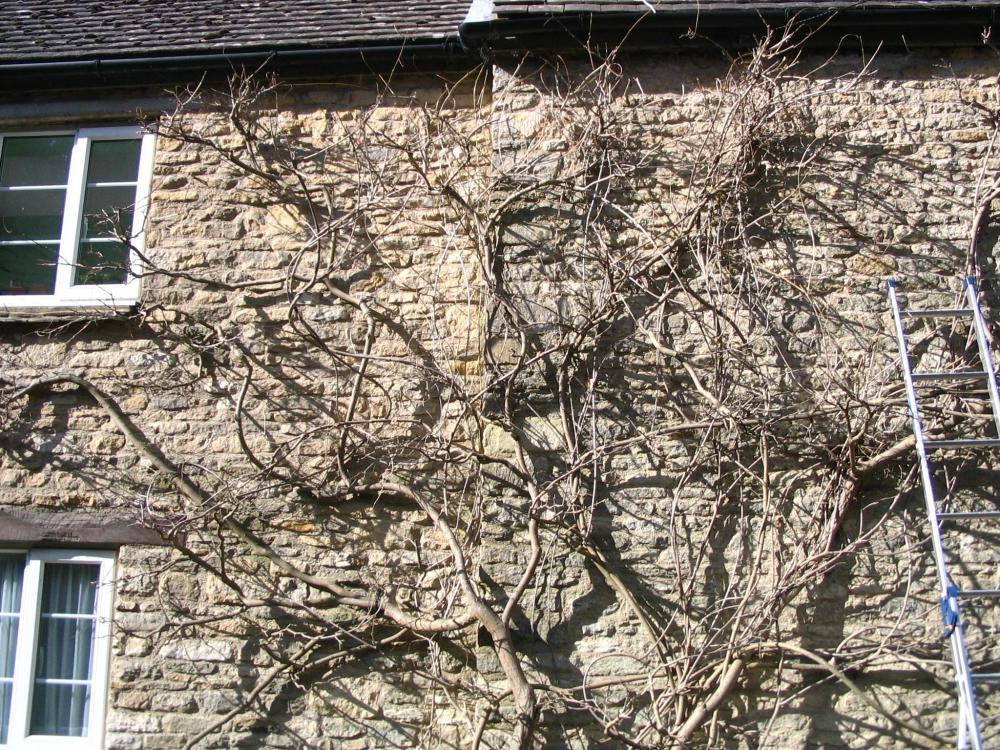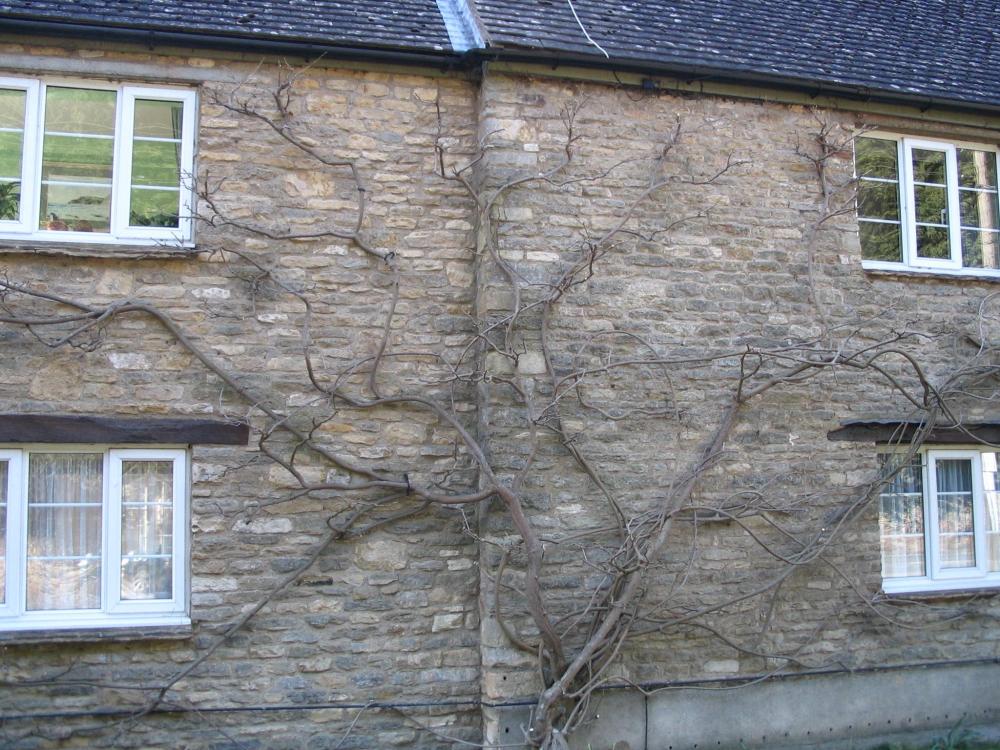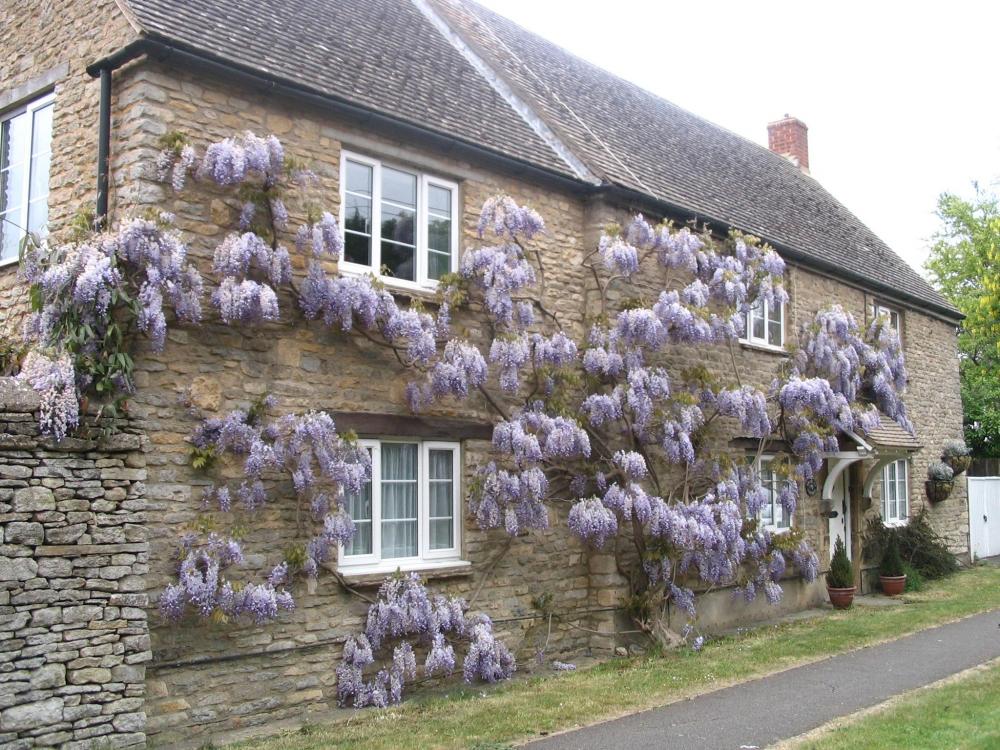Leaderboard
Popular Content
Showing content with the highest reputation on 08/07/20 in all areas
-
I think most people have been in the same boat as you and its probably done us all the world of good. I am so grateful that while in lockdown we have a garden and it has been wonderful to do so many off the jobs that i rarely get rouond to doing. and the Other Half didnt seem to mind helping either. Horticulture/gardening is an excellent form of therapy; so much so that some Dr's are even prescribing it. Re designing a garden, thats something i help people with. but Manchester is a bit of a long way from Bicester, Oxfordshire. Maybe i could start a simple guide to designing a garden. I used to teach it so will have a look at my notes and pull something together. it may be some use to others too. In the meantime, if you see a picture of a garden that you either like/hate, try to keep a note of what you liked/disliked. and try to decide what you'd like the garden to provide - is it just for entertaining? for relaxing? for children/pets?2 points
-
Hope this helps. For NewToAllOfThis. Lots of fabricators initial estimated prices are based on a price per tonne. If you are buying say 70 tonnes the price tends to be less. If you want a small amount for a one off job the price per tonne goes up. This is partly to do with the sequencing, taking off the quantities from standard drawings, programming, the cutting and drilling line and so on. The 203 x 203 x 46 are what we call a universal column section, UC's, you also often see mention of UB's these are more of an I shape where as UC's are more squat. For NewTo.. You have 70m of UC's @ 46kg weight per metre = 70 x 46 / 1000 = ~ 3.2 tonnes. Take roughly a mid range domestic one off figure of £2200 per tonne. If you get it for less then you can spend the saving on something else! For a smallish domestic job budget on .. 3.2 tonnes x £ 2200 per tonne = £ 7040. For this you get the steelwork with the connections, painting and so on comes next. Often some connections will be a bit more complicated and need heavier, different types of welds and so on, the fabricators know this when they are estimating. Some connections will be very simple, some not, but on balance it often all evens out for standard stuff. Next you need to prepare the surface of the steel. This needs to be done whether you are galvanising or painting it..neither will adhere properly if this is not done. Preparation of the surface is also controlled, often you see a term, shot blast to grade SA2.5.. this is to do with the amount of cleaning, preparation. The steel can lie about in a yard for a while and get a bit of surface rust, it also has what is called "mill scale" which roughly is loose material on the surface due to the rolling process. The shot blasting cleans this off. Here things start to diverge a bit. Some fabricators use the surface area of the section to work out how much paint they need. A 203 x 203 x 46 UC has a surface area of 1.19 m sq /per metre length. So 70m is 70m x1.19 ~ 84m sq. The paint varies a lot in price and the thickness is also important. But take the shot blasting and paint cost as say £ 10 / sq m thus you add £ 840.00 to the 7040 = 7880.00. Work that back now to a painted price per tonne.. 7880 / 3.2 = £ 2462.00 per tonne. All the figures I give are ex vat. The galvanizing is worked out in a slightly different way. Here the galvanizers often work on just a price per tonne but again it's partly due to the section shape / area. The cost of the zinc moves about a fair bit. Take a figure of £ 330.00 per tonne for galvanising. 330 x 3.2 = £1056 + 7040 = £ 8096 / 3.2 = £2530.00 per tonne Not much difference.. but much depends on the length of the section. One of the keys here is that if you have a long section then it needs a long galvanizing bath and there are fewer galvanizers with "long baths" so the price varies accordingly especially if it is a smallish order. If your section is too long then the galvanizer needs to double dip the section, this takes time and uses more zinc. However, there is often an extra transportation cost as the fabricator needs to fabricate the sections send them for galvanising and return back to their yard. So this needs to be added to the price too and these handling etc features can add quite a bit to the cost. What you can do is to introduce splices into the sections and thus make them shorter, yes there is an extra connection cost but this is offset by the range of galvanizers you can approach so more competition on price. Another benefit for the self / extension builder is that often you can collect the steel on say a trailer from the works , thus saving on the costs of a large wagon. Generally galvanising is more expensive than standard red oxide type painting but it tends to last longer. However if the steel is not exposed to the weather then painting is often sufficient. Lastly you may find that your Enginner has specified a grade of steel that is suitable for external use. The steel specification can vary when the steel is external and exposed to lower temperature (steel becomes more brittle in lower temperatures) than internal steel. This again can impact on the cost of the steel.2 points
-
They've got some data on power consumption too... Antifreeze pump is 3-45W, assume 15W. Air resistance when cooling is 70Pa at 250m3/hr (about right for a 200m2 house if I'm understanding correctly) -> 5W additional fan power @ 100% efficiency, so allowing for real life efficiency total system draw will be about 30W. Using their example for cooling, with air into the MVHR at 16°C and ambient at 28°C the cooling power you get (assuming no dehumidification) is (1010 J/kg.K) x (1.2 kg/m3) x (250/3600 m3/hr) x (28-16)= 1kW of cooling for a COP of about 40. Cooling power is 84W x temperature difference attributable to the ground loop (16°C in this case - their figures). DegreeDays.net gives 73 degree-days above 16°C in the past year at Aldergrove (closest station I could find to you) - 84 x 73 x 24 = 147,168 Watt-hours (147 kWh) of cooling. In reality this will be a bit better because it will also do some dehumidification. Same calculation for heating power gives 103 degree-days below 5°C: a 208 kWh saving. To me the numbers don't stack up as a means of energy saving - 400kWh/year is the output of a couple of PV panels, and in reality probably overstates things since night venting will probably deal with a big chunk of the cooling requirement for free and the frost protection on most MVHR systems probably kicks in significantly below 5°C. The only times I think it makes sense is if you're trying to hit a very strict energy requirement for some sort of standard when the very high COP is of value, or if you have a restriction (planning or similar) preventing you from using an ASHP for summer cooling.1 point
-
@SuperJohnG Protek for me. I got Warranty & BC combined from them.1 point
-
1 point
-
My mother bought me a garden design for my 40th Birthday (at my request) It was, probably, the best present I have ever had! It is the gift that keeps on giving. My designer asked me what I wanted. I remember saying I loved trees. Well, a year or so ago we had to take some of them out! Far too much shade and sunset blocking Other than that it has been great and I still have not finished it. I do have a large garden. I am going to do the same with the new project as I have a big birthday coming up. Mother is not around now but husband will just have to cough up whatever they charge now. I would never have thought of the plants the designer put together in borders. Our needs are different now. We will need much more hard landscaping and some raised beds.1 point
-
As soon as you do that you've either got a direct air path to the drains, or you've got standing water in the bottom of the tees. You're also starting to add complexity and hence cost. The real problem is that in a UK climate it saves very little energy - you don't need the defrost heater on an MVHR, and it provides a little bit of comfort cooling in summer. That means it's got to be seriously cheap for it to make any sense - if not you're better off spending the same money elsewhere, for example on a couple of extra PV panels. The running costs are also non-zero - either a longer inlet duct with a bigger pressure drop across it or a circulating pump for the brine loop - which needs to be set against any energy saving. For other climates - e.g. in the US - it makes much more sense: they regularly spend extended periods of time well below freezing in winter and have extended periods of high heat and humidity in summer, when it will help very significantly with the dehumidification load.1 point
-
1 point
-
1 point
-
We’ve done a few that have just wanted to change the colour we normally spray ten days before with an anti algae Let the rain to the rest1 point
-
1 point
-
@Russell griffiths @nod ToughButterCup last posted on Mon this week https://forum.buildhub.org.uk/topic/15908-new-here/?tab=comments#comment-2599901 point
-
1 point
-
As long as the biggest box / socket required will fit later on. Think this is 46mm (more commonly use on Land Rovers I believe).1 point
-
Best time to prune a wisteria is in winter - Feb is good - as you can see the framework that you have. Here are some before and after shots. And here it is flowering. In summer, i go thorugh the whole thing and cut back all the long whippy growths to 4-6 buds. this encourages the one nearest the plant to beome a flowering bud (as well as tidying it up), so in winter when i cut back to 2/3 buds, you have a new flowering one and 1-2 buds to grow. then repeat as many times as you like with the flowering spur getting bigger each year. occasionally cut out some of the flowering spurs to keep the plant in shape or let more light in. and if it needs renovating, cut it back really hard, leaving only the framework that is in the right place. it will soon send out new shoots which you can then train in for the future. The main thing is to be tough - remove any shoots that arent in the right place and tie in ones that are. you'll need a strong support too. Good luck.1 point
-
My Warranty was with selfbuildzone. They were fine with me using a passive slab.1 point
-
1 point
-
I have seen the underside of static caravans vans 25 years old that were elevated and the rust is significant to the point of structural failure. After they were moved you could see the outline of the chassis on the ground in rust.1 point
-
1 point
-
I said in my opinion, and I hope I am wrong. EWI tends to fall in a category called "hard to insulate" (or similar), which can get excluded from schemes designed to make max impact for minimum buck. For similar reasons they sometimes leave out "room in roof" houses. They can do a normal roof (above ceiling) type loft in an hour or less - I had one where I turned up 15 minutes late and they had already finished. But doing it on the slope is far more complex and takes days or a week or two. Similarly new efficient boilers are sometimes in, sometimes out. I have been having free insulation etc in rentals since ages, and sometimes complex ones are included, and sometimes excluded. The last time EWI was included here was a special local scheme which gave iirc 2/3 of cost capped at 4k or 6k grant. The ones I looked at still didn't add up for me as an investment - as by the time all the normal stuff had been done there were not enough savings opportunities left on the remaining energy bills even with the subsidy. The Council cocked up quite a lot of it by failing to consider ventilation when doing EWI on trad houses. That is why I am rabbiting on about ventilation and sweating detail. The next thing to check is restrictions - as they tend to include certain requirements to make sure you are making best use of the money (which is very sensible). An example was the restriction of solar panel subsidies to higher EPC bands, or sometimes by economic status of the occupant. An interesting wrinkle there for LLs is that you are sometimes more likely to get funding once you have already moved a tenant in rather than when you are renovating. You just need to understand the scheme. One obvious thing on the current one is to get your skates on, as it is iirc this financial year only. Again very sensible if part of the idea is to start the economy rolling. [Update: delighted to see that EWI has actually been included] Ferdinand1 point
-
@nod Has he not just changed his name (now Toughbuttercup)? He has done it before. From something to do with Newts if I remember correctly.1 point
-
@tanneja , solid wall insulation (EWI) will be included according to the Department for Busines..... Look for 'Solid wall'1 point
-
I seem to recall having reading 20cm minimum on at least a couple of manufacturer's sites. Aside from anything else I think too close might not look aesthetically pleasing?1 point
-
1 point
-
Retain 5% from each payment, so that you have £1,100 when it is complete. So far, he should be about 36% of the way through. Based on his costs and programme, does that seem about right? These things work both ways. You could stiff him for payments, he could draw too much on the job and leave before it is finished. You need to find a middle path. No way will you get to wait until it is completed, unless he is a mug.1 point
-
I have to take 3 bins 300m down our drive, I intend making a small trailer that the bins will live on that can be towed by the ride on mower.1 point
-
My present car (bought second hand) came with a towbar that looked unused, but no towing electrics. Apparently it was fitted just to tow the wheelie bin to the end of the drive once a week.1 point
-
1 point
-
Gardening is a full-time, ballache of a job. For 7 months a year it’s trying to strangle you and you have to spend your time stopping it from taking over before you get to improvements. And some people do it every year! Through a combination of lockdown, great weather and a lack of occupational work I’ve spent more time in my garden this year than in my entire adult life. (That isn’t surprising when you’ve spent 3/4 of that time in back to back terraces and flats). It’s given us some thoughts on some ‘features’ we would like but one thing neither my wife or I can do is visualise a garden we want. Which is in stark contrast to the house where we’ve always been able to see what we wanted. We need to spend the money on someone who knows what they’re doing but finding one of those is not easy.1 point
-
I used graphite EPS for my bungalow renovation but that was rendered over. Works really well, annedotal but even having not yet insulated the rooms in the roof (see my other thread) we barely use the heating in winter. I think EPS is considered somewhat vapour open (if that matters) and is dimensionally stable (if using proper EWI EPS cut from aged blocks - I bought EWI grade KayCel for this reason, lots of no-brand stuff out there which I was dubious about).1 point
-
How well is she heating the place? Does she open windows? Even in the winter I have always liked to freshen up the air in the house and I think it pays dividends. We dry a lot on a clothes horse but our house is warm due to the near 24/7 wood burner. The RH in our house is about 34% at the moment and we dried 2 full loads of washing last night. I do however see this in our loft sometimes, it is fully insulated and lined, carpeted and what not but it is still just used like a typical loft, i.e. to chuck stuff into to "clear it away" so it has not been heated for about 5 years, result is small areas of mildew and a slightly damp feeling to the walls. Goes away in the summer certainly and it can be brushed off easily enough. I do plan to bring the room into use this year so heating it up will help. So if she dries a lot of clothes and cooks a fair bit generating steam from pots etc. then I think she needs to apply more heat, ventilate better (even open a window when cooking etc. dry clothes near an open window) or possibly think about drying clothes slightly differently - laundry room etc if available? Ask her if she sees much condensation on the windows, particularly if they are double glazed - that would possibly indicate she is not heating the place quite enough to deal with the moisture. I once read somewhere someone commenting that damp tends to be more prevalent in properties of the less wealthy and I think that is very true because generally when you hear of damp issues it is usually in lower quality housing stock that is not heated as well obviously due to cost. However, the same can also be said of those who do their bit for the environment and turn the heating down and wear a nice jumper, even a house with a water ingress problem can be perfectly fine (except directly at the damp source) if adequate heat is applied. Students can have bad habits that cause damp, we had new student accommodation we were involved in, brand new build and the heating was metered hot water, so students were not heating their rooms well to save money and they were hanging clothes to dry over everything in their rooms instead of paying to use the tumbers in the laundry room. Result in some areas was a damp problem which was initially thought to be a building defect, transpired it was money saving practises or rather cash strapped students dictating necessity - the pub was busy though!1 point
-
0 points





.thumb.jpg.bac90f3bbf6868cf2118d010d936c99d.jpg)
